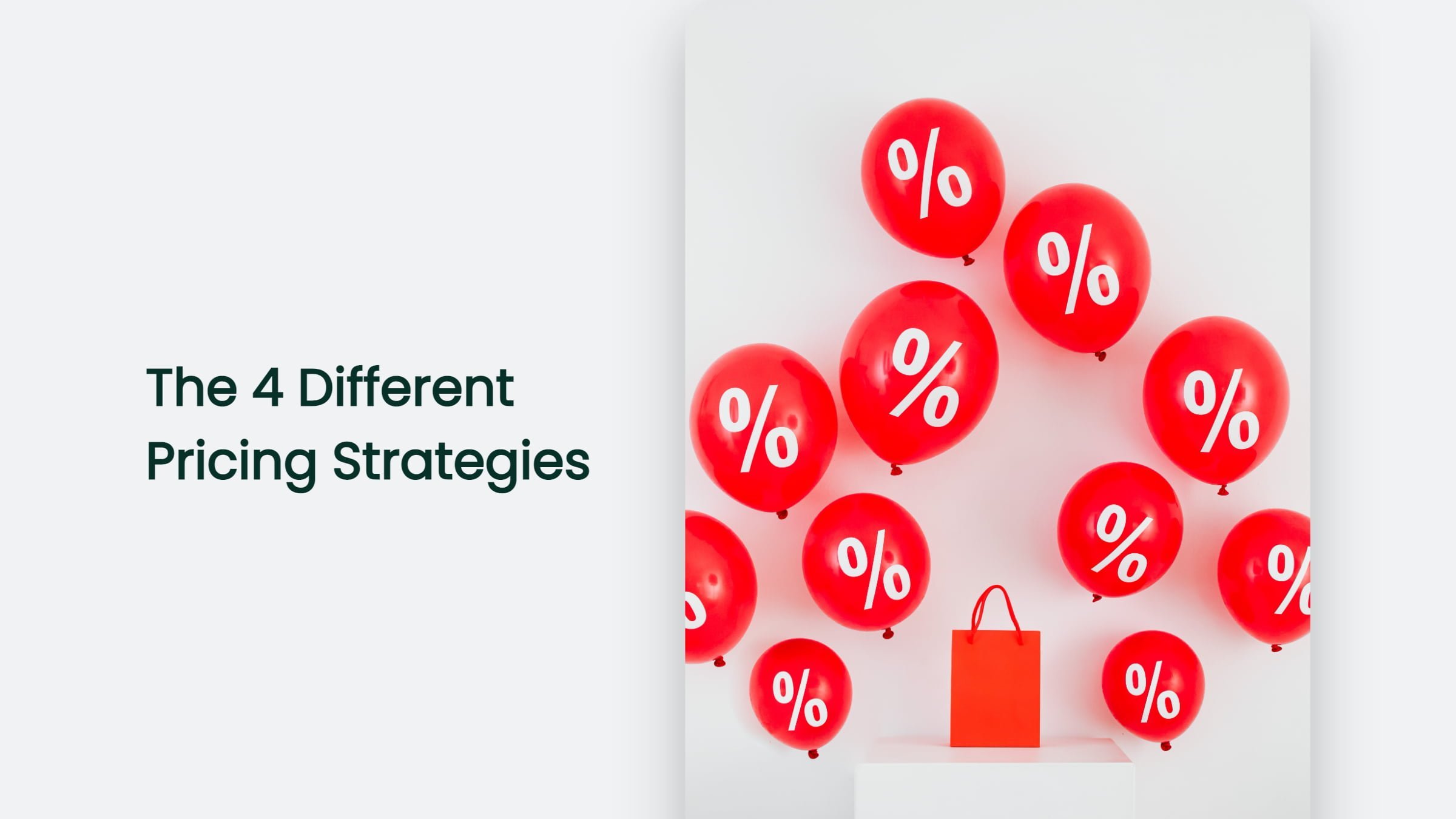When it comes to pricing, you should learn what are the 4 pricing strategies you need to be aware of.
They are premium, skimming, economy, and penetration. Depending on your product or service, one (or a combination) of these strategies might make the most sense for your business.
Let’s take a closer look at each one.
But first, let’s understand what pricing strategy is.

What is Pricing Strategy?
Pricing strategy is one of the most complexes and misunderstood concepts in business.
Figuring out how much to charge for a product or service isn’t an exact science – it requires considering various factors, from costs and competitor pricing to market trends.
Creating a suitable pricing strategy that makes sense for your business while maximizing profit and competing with competitors takes time and effort.
Yet, at the same time, when it’s done right, it can make all the difference between success and failure. So, research because understanding pricing strategy is key for any savvy entrepreneur!
Benefits of having a Pricing Strategy:
A pricing strategy can help you to maximize your profits.
To make the most money possible, you must have a pricing strategy. By carefully considering how much to charge for your products or services, you can ensure that you make as much money as possible.
A pricing strategy can help you to compete with other businesses.
If you want to stay competitive, then you need to have a pricing strategy. By carefully considering your prices, you can ensure that you offer your customers good value for their money. It will help you to attract and retain customers, as well as to win new business.
A pricing strategy can help you to manage your costs.
If you want to control your costs, you need to have a pricing strategy in place. By carefully considering your expenses and setting your prices accordingly, you can ensure that you spend only what you need on your products or services. It will help you to keep your business profitable and sustainable in the long run.
A pricing strategy can help you to communicate your value to customers.
Your pricing strategy is a key part of communicating the value of your products or services to customers. By carefully considering how much to charge, you can ensure that customers understand the importance of what you offer them. It will help them see your business as a worthwhile investment and encourage them to return in the future.
A pricing strategy can help you to manage customer expectations.
To manage customer expectations effectively, you need to have a pricing strategy. By carefully setting your prices, you can ensure that customers understand what they should expect from your products or services. It will help them to be satisfied with their purchase, and it will encourage them.
What are the 4 Pricing Strategies?
Premium
The premium pricing strategy is all about quality. With this approach, you focus on selling a high-quality product or service at a higher price point. This strategy is often used with luxury goods or services.
For example, a Rolex watch will be more expensive than a Timex watch because it is made with higher-quality materials and craftsmanship.
Skimming
The skimming pricing strategy is the opposite of the premium strategy. With skimming, you focus on selling a lower-quality product or service at a lower price point.
This strategy is often used when a new product or service is on the market. For example, when the first iPhone was released, Apple used a skimming strategy by charging a high price for the new device.
As time passed and newer generations of the iPhone were released, the price gradually decreased as the market saturated.
Economy
The economy pricing strategy is all about affordability. With this approach, you focus on selling a high volume of lower-priced goods or services. Businesses often use this strategy with high overhead costs that need to be met (think Walmart). By selling a large volume of items at a lower price point, businesses can make up for their higher costs.
Penetration
The penetration pricing strategy is similar to the economy pricing strategy in that it focuses on affordability; however, there is one key difference.
With penetration pricing, businesses initially charge a low price for their goods or services to gain market share. Once established in the market, they gradually increase costs over time. This strategy is often used by businesses that are entering a new market.
Examples of Companies that Use Cach Pricing Strategy:
Here are some examples of companies that use each pricing strategy:
- Penetration Pricing: One example is the video streaming service Netflix, which initially offered its services at a low price to gain a large market share.
- Value-Based Pricing: Apple is known for using this strategy, pricing its products based on the value they believe the products provide to the customers.
- Price Skimming: When Apple launches a new iPhone, it typically sets a high price initially and then gradually lowers it over time, which is an example of price skimming.
- Cost-Plus Pricing: This strategy is commonly used in the manufacturing industry. For example, a company that produces electronic goods may use cost-plus pricing to ensure they cover their production costs and make a profit.
- Competitive Pricing: Amazon and Walmart are examples of companies that use competitive pricing. They continually adjust their prices to maintain their competitive edge, often using dynamic pricing algorithms to change product prices in real-time based on various factors.
These examples illustrate how companies implement pricing strategies to achieve their business objectives.
Frequently Asked Questions:
Which companies use competitive pricing?
Amazon and Walmart are examples of companies that use competitive pricing. They continually adjust their prices to maintain their competitive edge
What is cost-plus pricing, and which industry commonly uses this strategy?
Cost-plus pricing is a strategy where a company adds a markup to the cost of the product to determine its price. This strategy is commonly used in the manufacturing industry
The Bottom Line:
When it comes to setting prices for your products or services, there are four main strategies that you need to be aware of: premium, skimming, economy, and penetration.
Depending on your specific situation, one (or a combination) of these strategies might make the most sense for your business. So, choose wisely!




